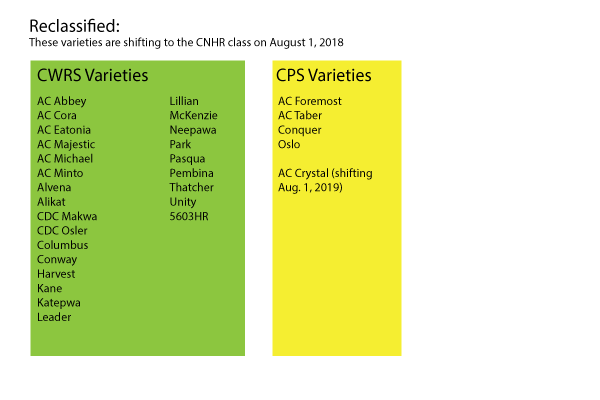Changes are happening to the wheat classification system and here is what you need to know prior to August 1st.
1. A need for change!
- There were increasing complaints from global wheat customers regarding the quality and inconsistency of the Canadian milling wheat.
- Growers had an appetite to try new milling wheat genetics from the US and found they did not fit the Canadian wheat milling class quality parameters.
Varieties that were identified as being weak on gluten strength were:
- Harvest
- Lillian (solid stem)
- Unity (midge tolerant)
These three combined, accounted for 20-40% of the acres seeded to wheat (2010 to 2015). Today that number is currently closer to 5%.
3. New standards.
New upper and lower limits on gluten strength were put in place for CWRS and CPSR classes.
The upper limit for both classes is Glenn, a CWRS wheat. The lower limit for CWRS in central and western Prairies is Carberry, and for the Parkland region is Parata. The lower gluten strength limit for the CPSR class is now 5700PR.
4. A new modern wheat classification system!
The modernization of the classification system also involved the removal of the Feed Wheat, Interim Wheat and General Purpose wheat classes. Two new classes were created. The Special Purpose class that included all the varieties previously in the General Purpose class. The Canadian Northern Hard Red (CNHR) class will contain all the wheat varieties with lower gluten strength than the new lower limits of the CWRS and CPSR classes. They will, however, still possessing good milling and baking qualities. These changes were effective August 1, 2016.
5. Are you prepared for change on August 1st?
Twenty-nine varieties will move from the CWRS and CPSR classes into the new CNHR class effective August 1, 2018. For the complete list of varieties please follow this link.
In conclusion, if you are growing any of the listed varieties on your farm, be aware that come harvest they will no longer be in the CWRS or CPSR class.


